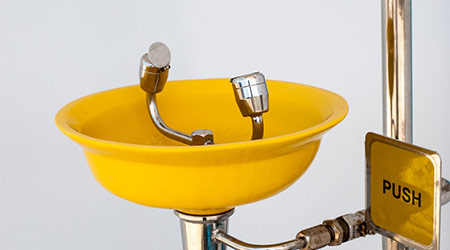For companies maintaining or considering emergency shower and eyewash stations, there are two key standards to remember, according to an article on the Occupational Health & Safety website.
The ANSI/ISEA Z358.1-2014 American National Standard for Emergency Eyewash and Shower Equipment is an essential resource — visit ISEA's www.safetyequipment.org website to order it.
This consensus standard outlines the minimum equipment performance criteria for this equipment. It specifies flow rates, water temperature delivery, testing, and much more.
Z358.1 is the leading international standard for implementation of eyewash and shower equipment. On the standard’s page on its website, ISEA points out what a wide range of industries need to install and maintain this emergency equipment, listing "manufacturing and processing facilities, construction sites, laboratories, medical and healthcare offices, refineries and other workplaces."
The other key standard is Occupational Health & Safety's (OSHA's) first aid standard, the one that explains the requirement for certain facilities in those and other industries to install shower or eyewash equipment. OSHA's 29 CFR 1910.151(c) says, "Where the eyes or body of any person may be exposed to injurious corrosive materials, suitable facilities for quick drenching or flushing of the eyes and body shall be provided within the work area for immediate emergency use."

 Making the Energy Efficiency Case to the C-Suite
Making the Energy Efficiency Case to the C-Suite How to Avoid HAIs This Flu Season
How to Avoid HAIs This Flu Season Design Phase Set to Begin for Hospital Annex at SUNY Upstate Medical
Design Phase Set to Begin for Hospital Annex at SUNY Upstate Medical Building Hospital Resilience in an Era of Extreme Weather
Building Hospital Resilience in an Era of Extreme Weather Ennoble Care Falls Victim to Data Breach
Ennoble Care Falls Victim to Data Breach